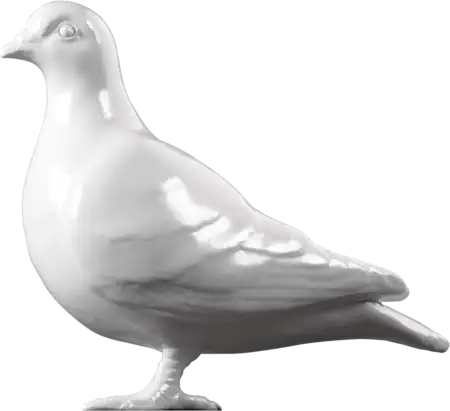Fashion — 1768-1780
Dress
Gown of silk brocade with wide skirt to fit over hoops. The dress would have been called a "sack back" due to its construction: the fabric at the back is floating to the ground without being gathered in at the waist. The dress has a matching petticoat and stomacher (33.91b and 33.91c). It is likely to have been made for wear at court.
Fabric: light green taffeta ground with narrow pink cannellé stripes. A broad stripe is brocaded in silver-gilt strip (the gilding has nearly all worn away except on the back) and between the clusters of stripes are (1) a meandering flowering stem in coloured silks and silver frisé and (2) peacock feathers each tied with a bow. These are also woven in coloured silks and silver frisé. The front is decorated with puffs made from the same material and very elaborate matching trimmings (covered crinkled paper?) which dangle. Material width: 20 3/4 ins; selvages: 1/4 ins (red, green tabby 6 outer cords); repeat width: 10 3/8 ins; length 5 1.16 ins. (Note by Natalie Rothstein)
Construction: The back shoulder pleats are stitched into a small yoke piece forming the back neckline; the sack back is constructed with two symmetrical double box pleats. The bodice’s front edges are folded into a robing that is tacked down. The bodice is lined with cream-coloured linen that is split up the centre back to just below the neckline. The edges of the split are boned with eyelets worked beside the boning to allow for lacing up and creating a fitted bodice underneath the sack back. A piece of plain green silk (lustring?) is used to make a placket on the inside front edges of the dress bodice to pin the stomacher to. The bodice is sewn together with lapped seams stitched with running stitches that are tiny on the outside and longer on the underside, these are stitched through the lining layer, which is also lapped but whip stitched. The sleeve seams are sewn the same way as the bodice seams: the sleeves are set into the armhole at the underarm and backstitched, they are pleated over the lining shoulder piece and the raw edges hidden by the robing; inside, the armhole seam allowances have been turned in towards each other and running stitched to create a clean finish. The elbow-length sleeves have a double layer of ruffles.
The skirt and petticoat are pieced from several widths of fabric which are sewn together with loose backstitches. The front edges of the dress skirt are self-faced, the hem is faced with beige-coloured linen. A metal ring is stitched to the inside of the skirt at the side back, approximately 6” below the waist, and a length of green silk tape is stitched to one side of the skirt/waist join on the inside. This appears to be a tie meant to go through the loops and possible tie at the opposite side of the skirt to create a polonaise effect. There is no waist seam in the back of the dress. The pleats in the sides of the skirt were sewn with fabric right sides together and whip stitched from the underside. The dress and petticoat hems are finished by turning the silk and facing edges in towards each other and stitching with small running stitches. The fronts of the dress and petticoat are decorated with puffed self-trimming and passementerie in a complex design with partially metal tassels. The puffs are filled with wool batting.
There are no signs of alteration; the only possible indication is an overlap of the sleeve seam visible from the underside – however, this seems more likely to have been an alteration made during original construction/fitting as there are no corresponding alterations to the sleeve end trimming or bodice, nor any old stitch marks. (Constructions notes adapted from Carolyn Dowdell's).
- Category:
- Fashion
- Object ID:
- 33.91a
- Object name:
- dress
- Object type:
- Artist/Maker:
- —
- Related people:
- Related events:
- Related places:
- Production date:
- 1768-1780
- Material:
silk, linen
- Measurements/duration:
- L 1365 mm (shoulder to hem), W 380 (armpit to armpit), W 360 mm (waist), W 950 (hips), L 165 (center to back), C 3670 mm (skirt, full extent) (overall)
- Part of:
- —
- On display:
- —
- Record quality:
- 100%
- Part of this object:
- —
- Owner Status & Credit:
Permanent collection
- Copyright holder:
digital image © London Museum
- Image credit:
- —
- Creative commons usage:
- —
- License this image:
To license this image for commercial use, please contact the London Museum Picture Library.

